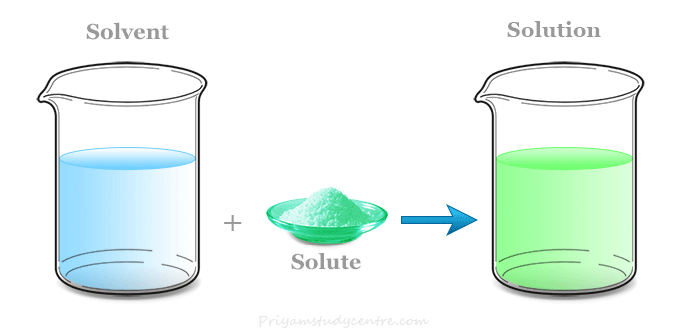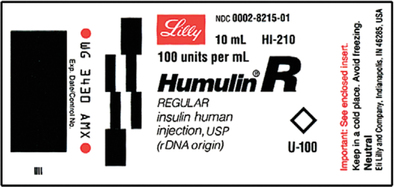Not Everything Is Given In mg
Published (updated: ).
Solutions

A solution is the combination of a solute and a solvent. The solute is the substance being dissolved (tea, coffee, or cool-aid). The solvent is the fluid that is used to dissolve the solute (usually water). Solutions are either represented by a ratio or a percent.
Commonly called ‘Epi 1:1’. Since there is 1 gram (1,000 mg) of Epinephrine in 1000 ml, it is easy to see that for every ml (cc) of Epi 1:,1000 you get 1 mg.
In Epi 1:10,000, there is 1 mg of Epi in 10 cc. If you were to make Epi 1:10,000, then you would add 1 gram of Epi to 10,000 cc’s (or 10 liters- which is the same as adding 1 gram of Epi to 5 2- liter bottles).
Units

A unit is a unit. Typically, the measurement of hormones or any other product that is produced biologically (either naturally or genetically engineered) is measured in what is known as a unit. A unit is defined as the amount of a hormone or other biologically produced medication that has some action on the body. The amount of biologically engineered product that is in one unit usually depends on the standards set fourth by the Federal Drug Administration. We call the measurement a ‘unit’ to keep it simple. Commonly carried medications measured in this manner are Vasopressin (a hormone that acts in cerbrovascular perfusion that we use to protect the brain during cardiac arrest) and pitocin (another hormone we carry that helps us stop post partum bleeding). The good part is all you need to know is how many units to give. Let’s look at vasopressin:
Ordered: 40 units of Vasopressin
Amount on hand: Vasopressin 20 units in 1 cc (packaged in 1 cc vials)
40 units/20 units = 2, 2* 1cc = 2 cc’s
Amount to give: 2 cc’s or 2 vials
Milliequivilents

Some of the drugs we carry cannot be measured in grams, because they are electrolytes. Electrolytes are chemicals that take on an electrical charge when placed in the body. All electrolytes are measured in milliequivalents or mEq. We carry three medications that are measured in this way, Magnesium (but often measured in grams), Sodium Bicarbonate, and Calcium. Each have their own special use. Bicarb is the one we use the most, and for our purposes, it is pretty easy to use. We commonly give an ‘amp’ or ‘half an amp’. Often times, grams are used in place of mEq, and that is okay. You can calculate a mEq in the same manner that you would calculate a medication given in mg.
Bicarb is a great example:
Ordered: 100 mEq Sodium Bicarbonate by bolus
On Hand: 50mEq/50 cc (per prefilled syringe)
100mEq / 50mEq = 2 2 x 50 cc’s = 100 cc’s or 2 prefilled syringes
Calculating Drug and Fluid Boluses
Wouldn’t be great if medical control ordered you to administer 1 box of the stuff in the purple package and 1 of the stuff in the gray box? Would it be even better if medical control wanted us to give everything in each syringe (instead of just a part of it)? Only in your Roy and Johnny dreams will that ever happen. Just blame it on the pharmaceutical companies that package this stuff (by the way, you can order almost any medication pre-packaged in nearly any amount you want).
Administering Boluses
Let’s start with fluid boluses. To administer a fluid bolus, we simply infuse the fluid and observing how much fluid we are administering. When we have infused the amount ordered, we stop infusing the fluid. Let’s say you are to administer 500cc of Normal Saline to a patient. To accomplish this task, you could:
- Turn your roller clamp to the wide open position and observe the bag level as the fluid is infused into your patient
- Utilize a 100cc syringe and administer 100cc boluses
- Utilize a microset burette, filling the burette with the amount of fluid to infuse and then infusing
Don’t forget to clamp the bag when your bolus has been administered (nothing worse than a runaway IV bag).
Q. You are ordered to administer 300 cc/hr of NS. You are using a 20 drop set.
A. 100 drops per minute300 cc’s x 20 drop set (or 20 drops = 1 cc)
_____________________________________________ = 100 drops per minute
60 minutesQ. You are ordered to administer 300 cc’s of NS in 30 minutes. You are using a 20 drop set.
A. 200 drops per minute300 cc’s x 20 drop set (or 20 drops = 1 cc)
_____________________________________________ = 200 drops per minute
30 minutes
or You could multiply the answer from the first question times 2 since the
same amount is given in half the time (same amount of fluid in half the
time = twice the number of drops)Q. You are ordered to administer 10 cc/kg to a patient that weighs 220 pounds. You are using a 20 drop set.
How many cc’s of fluid will you administer.A. Real simple: First: Convert the pounds to kilograms
220/2.2 = 100 kgSecond: Multiply the number of kg times the number of cc/kg ordered by the physician.
100 kg x 10 cc = 1000 cc
Administering a fluid bolus is easy; let’s try a medication bolus. To administer a medication bolus you will use the same principle as the fluid bolus, only you are usually giving smaller amounts. The only difference is that the unlike fluids (which are measured in cc’s/ml’s) the amount to be infused will often be measured in grams (more like milligrams). Sometimes, pre-filled syringes are labeled with a volume (ml) and a mass (mg) declination on the side of the syringe. This is definitely helpful, but the declination is not always there. Further, you might be retrieving your meds from a vial or ampoule, which you will have to draw into your own syringe.
Q. You are ordered to administer 0.4 mg of Epinephrine 1:10,000 to a patient. On hand you have 1 mg in 10 cc’s. How many cc’s do you administer?
A. 4 cc or 4 ml
Epinephrine 1:10,000 contains 1 mg of epinephrine in 10 cc’s of fluid. You are ordered to give 0.4 mg of epinephrine. Since you only need 0.4 mg of 1 mg, and the drug is packaged in 1 mg, you only need 0.4 portion (or 40%) of the solution. 40% of 10 cc is 4 cc or 4 ml
Q. You are ordered to administer 12.5 grams of Dextrose. How many cc’s of the D50W solution do you administer?
A. 25 cc or 25 ml
D50 is Dextrose 50% in Water. The manufacturer put 25 grams (where 1 gram = 2 cc) of dextrose and 25 cc’s of fluid (for a total of 50 cc) to make D50. Since you are ordered to give 12.5 grams of Dextrose, you would only give half of the D50 to administer 12.5 grams. Therefore you would give 25 cc’s.
Q. The doctor orders you to administer 25 mEq of Sodium Bicarbonate. How many cc’s of Sodium Bicarbonate do you administer?
A. 25 cc’s
Sodium Bicarbonate is typically packaged in 1 mEq per cc. Since we are to give 25 mEq, we would give 25 cc’s
Q. The doctor orders you to administer 75 mg of 2% Lidocaine. How many cc’s do you administer?
A. 3.75 cc’s
2% Lidocaine is typically packaged as 100 mg in 5 cc’s of fluid. The doctor wants you to give 75 mg. 75 is 3/4 of 100. Therefore, you would give 75% of the 5 cc’s. 75% of 5 cc’s is 3.75.
Whether you are administering a drug or fluid bolus, boluses are pretty much the same. The final step in the above scenarios is checking your work. If you get this question wrong, you might fail the test. If you get the same question wrong in real life, you might overdose your patient.
Q. You are ordered to administer 0.4 mg of Epinephrine 1:10,000 to
a patient. How many cc’s do you administer?
A. 4 cc or 4 ml
To check this answer, we have to work the problem in reverse. The easiest way to do this is the simply rephrase the question:
Q. If I give 4 cc’s of Epinephrine 1:10,000 to a patient. How many mg’s did I administer?
